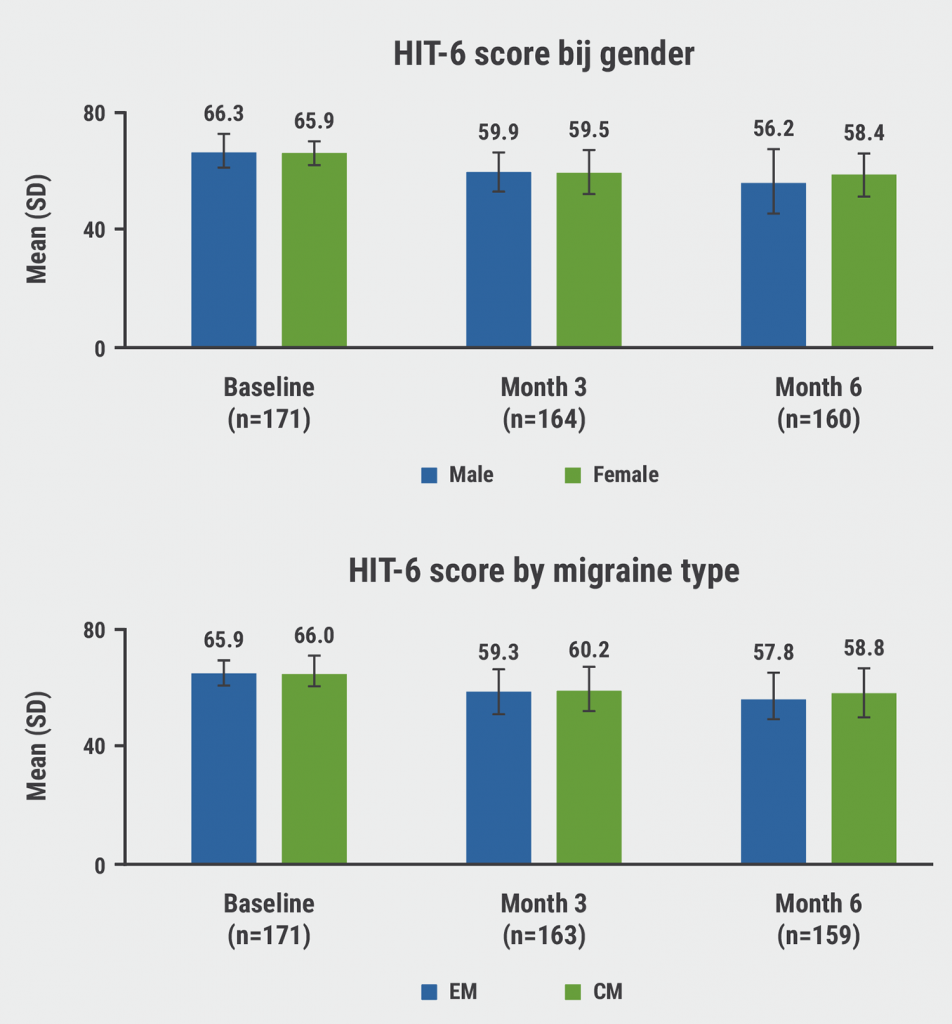Due to higher disability, comorbidity, and healthcare resource utilisation, chronic migraine and high-frequency episodic migraine have a higher disease burden compared with low-frequency episodic migraine. CONQUER was a phase 3, multicentre, randomised controlled study in adult patients with treatment-resistant chronic or episodic migraine, who failed at 2-4 migraine-preventive medication categories over the past 10 years.
The current analysis aimed to assess the shift from chronic to episodic migraine status and from high- to (very) low-frequency episodic migraine. The following definitions were used:
- high-frequency episodic migraine: 8 to <15 migraine headache days per month with <15 headache days per month;
- low-frequency episodic migraine: 4 to <8 migraine headache days/month; and
- very-low-frequency episodic migraine: <4 migraine headache days/month.
At baseline, a total of 193 patients had chronic migraine and 198 patients had high-frequency episodic migraine. The mean number of headache and migraine headache days per month were 20.9 and 18.7 days, respectively, in chronic migraine patients and 10.8 and 9.3 days, respectively, in episodic migraine patients.
During the double-blind period, a significantly greater proportion of patients receiving galcanezumab versus placebo shifted from chronic to episodic migraine status:
- month 1, 49.0 versus 29.1 (P=0.008);
- month 2, 50.1 versus 25.7 (P=0.001); and
- month 3, 61.9 versus 32.1 (P≤0.001).
By the 3rd month, 39.9% of galcanezumab-treated patients versus 20.5% from the placebo group shifted from high- to low-frequency episodic migraine and sustained that shift at each of the 3 consecutive months of the double-blind period. This was seen in 9.8% versus 0% who shifted from high- to very low-frequency episodic migraine.
By month 6 –which corresponds to month 3 of the open-label extension period– 51.5% of patients in the galcanezumab/galcanezumab versus 46.7% (P=0.540) in the placebo/galcanezumab group had ≥3 consecutive months of shift from chronic to episodic migraine. The percentage of patients who shifted from high- to (very) low-frequency episodic migraine was:
- from high- to low-frequency episodic migraine: 60.2% versus 66.1% (P=0.413); and
- from high- to very low-frequency episodic migraine: 18.2% versus 22.5% (P=0.437).
Among patients with treatment-resistant migraine, treatment with galcanezumab resulted in a significant shift from chronic to episodic migraine status and from high- to low-frequency episodic migraine.
- Kingston WS. Shift from chronic to episodic migraine status and high- to low-frequency episodic migraine status among patients with treatment-resistant migraine in a phase 3 galcanezumab study. MTIS Virtual Symposium 2020, abstract MTV20-DP-062.
Posted on
Previous Article
« Worldwide survey shows substantial burden of migraine Next Article
Long-term onabotulinumtoxinA improves quality of life in migraine »
« Worldwide survey shows substantial burden of migraine Next Article
Long-term onabotulinumtoxinA improves quality of life in migraine »
Table of Contents: MTIS 2020
Featured articles
Contents
Improvement of migraine using CGRP mAbs in a real-world setting
Similar treatment needs for high-frequency episodic and low-frequency chronic migraine
Nitroglycerin-induced cluster headache attacks characterised comprehensively
Remote electrical neuromodulation useful for adolescents with migraine
Concomitant preventive medication has no impact on efficacy of ubrogepant
No new cardiovascular safety concerns with long-term use of lasmiditan
Less medication use and fewer doctor visits with galcanezumab in treatment-resistant migraine
Real-world evidence reveals physicians’ perception of erenumab
Early initiation of lasmiditan improves migraine outcomes
Fremanezumab effective in patients with migraine and comorbid depression
Long-term onabotulinumtoxinA improves quality of life in migraine
Sustained shift in migraine status using galcanezumab
Long-term efficacy and safety of fremanezumab in treatment-resistant migraine
Related Articles

November 8, 2021
First real-world effectiveness data of erenumab is promising
December 22, 2021
CGRP inhibitor erenumab safe and effective in migraine with aura
© 2024 Medicom Medical Publishers. All rights reserved. Terms and Conditions | Privacy Policy
HEAD OFFICE
Laarderhoogtweg 25
1101 EB Amsterdam
The Netherlands
T: +31 85 4012 560
E: publishers@medicom-publishers.com

